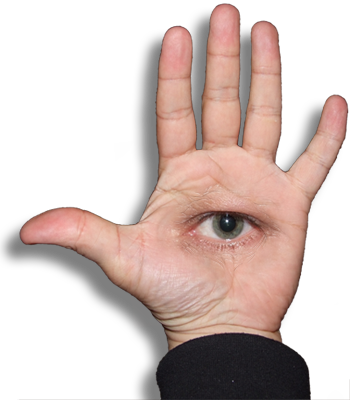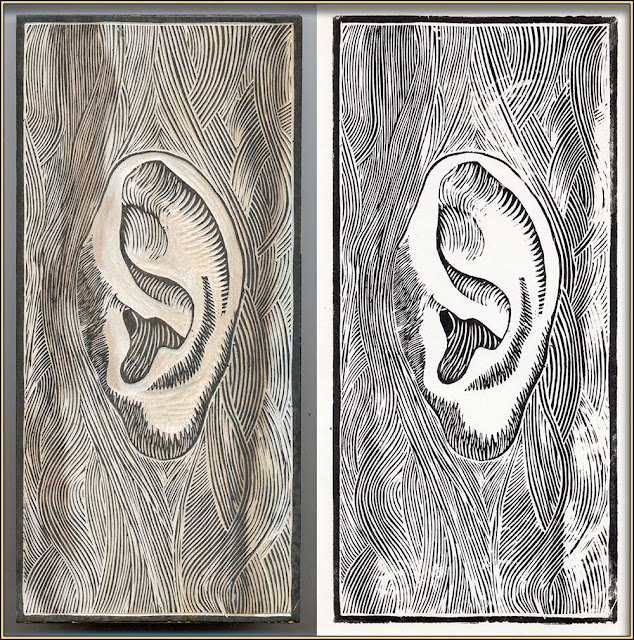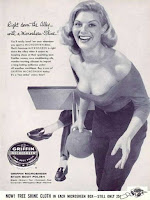 |
Colour mock-up
— will probably change a bit |
Let's start from the end. This is the completed woodcut in three colours (four if you count the seal stamp). It was printed in "Flint" water-based relief inks on a registration stage, using one of my glass-bead barens.
Process
The design is drawn on to 3mm MDF in Indian ink. That orangy-yellow is just there to make it easy for me to see where I have and haven't cut the MDF away.
MDF has its pluses and minuses as a woodcut medium. It has no grain, and it's easy to cut with sharp tools. It's like very hard lino in that respect, except that you can manage finer detail than you can in lino. On the other hand, it's a bit fibrous and fragile, and it's very easy for small details to be torn away by the pressure of the gouge. Also, the silica in it is pretty hard on edges, and you need to be sharpening a lot more than you would with proper wood or lino.
The wooden handled gouges in the stand (to the right) are all very cheap, and the steel is, frankly, not great. The blue ones in the foreground I got when I was at polytech; they were more expensive, though not desperately so — I think a set cost about thirty bucks — and their steel is much better, taking and keeping a much better edge.
Here's the first test print, to see if or where any more cutting needs to be done. Overall, I'm reasonably happy with it so far.
This is not, I should note, a good print, and it's intended solely for informative purposes. It hasn't been inked up evenly, and it should have more ink on it, but inking up will get more consistent as the old ink seals the rather absorbent surface of the MDF.
Once the key block — the main detail block, usually containing all or most of the outlines — is done, the colour blocks are created by means of an offset printing process.
The blocks are all placed in exactly the same position, kept in place by the black cardboard tabs you can see surrounding it, and the key block is printed on to (in this case) a piece of clear plastic, also locked into position with masking tape. Acetate is better, as it takes the ink better and is more dimensionally stable. Paper is usable, but because it is absorbent it makes the transfer on to the other blocks less reliable.
Once the plastic is printed, key block is removed, and another block is placed into the printing position. The plastic, with its printed image, is lowered on to the new block and the ink rubbed on to its surface. I use a rubber brayer for this.
The process is repeated as many times as is necessary, and now I have a reference image on the colour blocks, exactly the same as the key block, that I can use to exactly register the cutting for each new colour.
I'll do as many blocks as I think I'll need, plus one or two more in case of fuck-ups.
In this case, I'm expecting to want two colours in addition to the key block, and I've done three colour blocks.


















































